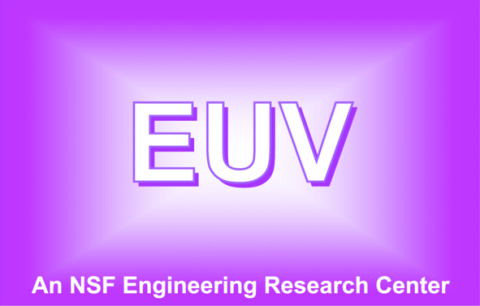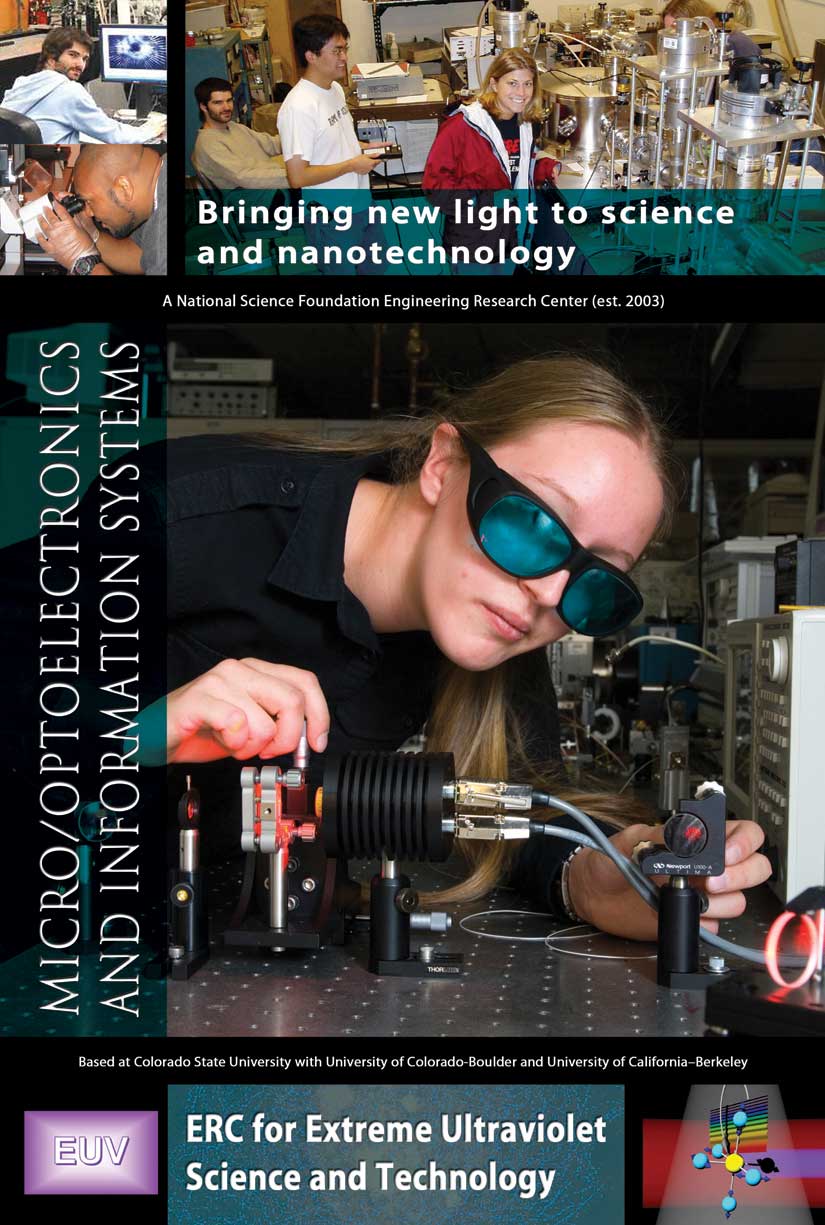ERC for Extreme Ultraviolet Science and Technology

The Extreme Ultraviolet Engineering Research Center (EVU ERC) is composed of elements from Colorado State University (host institution); the University of Colorado, Boulder; the University of California, Berkeley; and the Lawrence Berkeley National Lab. The vision of the EUV center is to develop small, relatively inexpensive sources for EUV radiation that could be deployed on table tops or bench tops in laboratories. The Center's success in the development and deployment of these sources in test beds enables researchers to advance the boundaries of knowledge in many fields while providing systems-level experience and education for graduate students who are highly valued by our industry partners. Center breakthroughs of note include the first commercialization of coherent, compact EUV sources. These new sources have made possible advancements in materials characterization ranging from 3D-composition nano-imaging of materials and cells to heat transport in nanostructures (important to the design of next-generation integrated circuit structures). Nano-scale imaging and patterning work spans the use of table-top systems in EUV lithography metrology to the development of movies of nano-scale dynamic phenomena.
Microelectronics and IT
Microelectronics, Sensing, and IT
Location
Lead Institution
Start Year
Website
Fact Sheet
Core Partners
Locations
Additional Information
Focus
ERC EUV explores the development and application of compact coherent EUV sources with the objective of making EUV technology widely available to solve challenging scientific and industrial problems.
Graduation Date
Education Web Page
Research Opportunities for Undergrads
Student Leadership Council
ERC for Extreme Ultraviolet Science and Technology

The Extreme Ultraviolet Engineering Research Center (EVU ERC) is composed of elements from Colorado State University (host institution); the University of Colorado, Boulder; the University of California, Berkeley; and the Lawrence Berkeley National Lab. The vision of the EUV center is to develop small, relatively inexpensive sources for EUV radiation that could be deployed on table tops or bench tops in laboratories. The Center's success in the development and deployment of these sources in test beds enables researchers to advance the boundaries of knowledge in many fields while providing systems-level experience and education for graduate students who are highly valued by our industry partners. Center breakthroughs of note include the first commercialization of coherent, compact EUV sources. These new sources have made possible advancements in materials characterization ranging from 3D-composition nano-imaging of materials and cells to heat transport in nanostructures (important to the design of next-generation integrated circuit structures). Nano-scale imaging and patterning work spans the use of table-top systems in EUV lithography metrology to the development of movies of nano-scale dynamic phenomena.
|
LocationFort Collins, Colorado
|
Lead InstitutionColorado State University
|
Start Year |
Website |
Fact SheetDocument
|
Core PartnersUniversity of Colorado, Boulder
University of California, Berkeley
|
FocusERC EUV explores the development and application of compact coherent EUV sources with the objective of making EUV technology widely available to solve challenging scientific and industrial problems. |
Graduation Date |
Education Web Page |
Research Opportunities for Undergrads |
Student Leadership Council |
Locations
ERC for Extreme Ultraviolet Science and Technology

The Extreme Ultraviolet Engineering Research Center (EVU ERC) is composed of elements from Colorado State University (host institution); the University of Colorado, Boulder; the University of California, Berkeley; and the Lawrence Berkeley National Lab. The vision of the EUV center is to develop small, relatively inexpensive sources for EUV radiation that could be deployed on table tops or bench tops in laboratories. The Center's success in the development and deployment of these sources in test beds enables researchers to advance the boundaries of knowledge in many fields while providing systems-level experience and education for graduate students who are highly valued by our industry partners. Center breakthroughs of note include the first commercialization of coherent, compact EUV sources. These new sources have made possible advancements in materials characterization ranging from 3D-composition nano-imaging of materials and cells to heat transport in nanostructures (important to the design of next-generation integrated circuit structures). Nano-scale imaging and patterning work spans the use of table-top systems in EUV lithography metrology to the development of movies of nano-scale dynamic phenomena.
Microelectronics and IT
Microelectronics, Sensing, and IT
Location
Lead Institution
Start Year
Website
Fact Sheet
Core Partners
Additional Information
Focus
ERC EUV explores the development and application of compact coherent EUV sources with the objective of making EUV technology widely available to solve challenging scientific and industrial problems.
